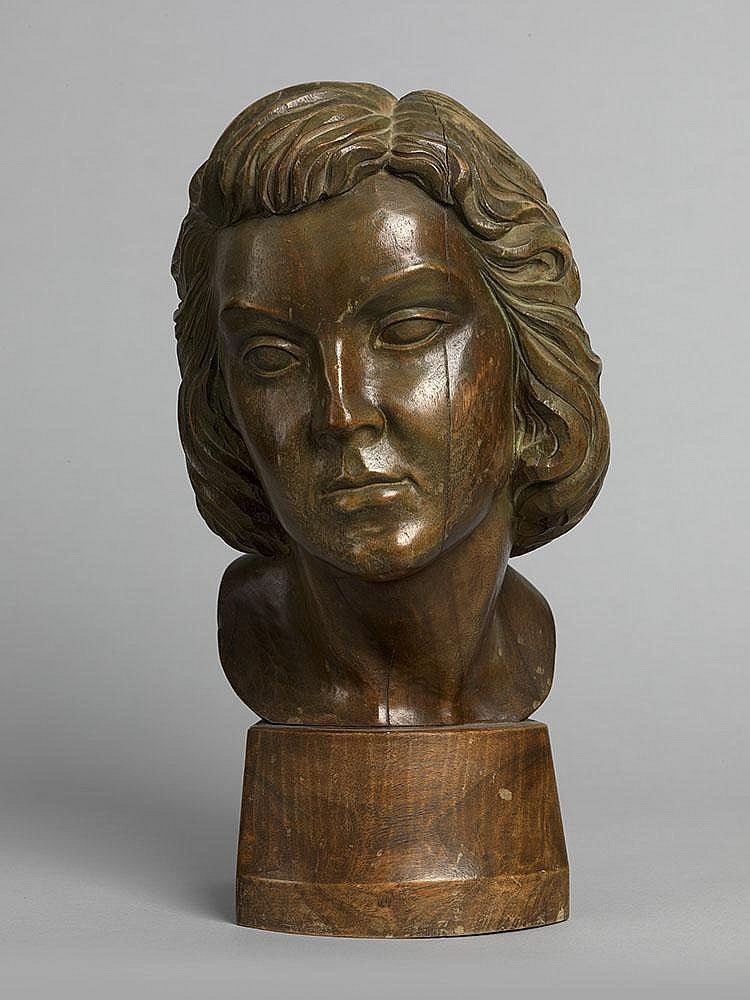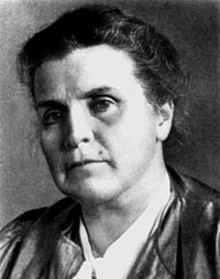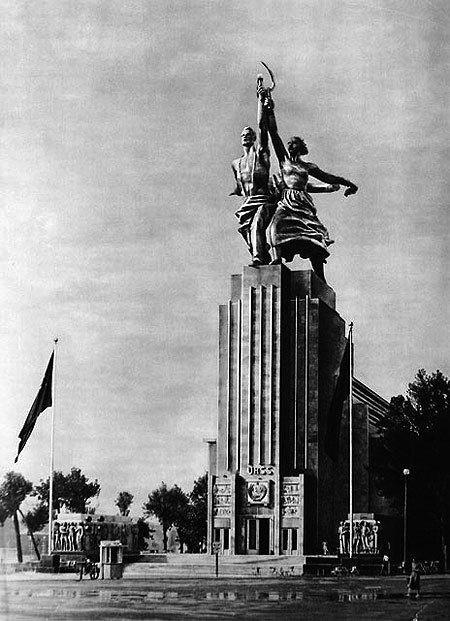Name Vera Mukhina Role Sculptor | Books A Sculptor's Thoughts | |
 | ||
Education Academie de la Grande Chaumiere | ||
Sculpture worker and collective farm woman vera mukhina test fly
Vera Ignatyevna Mukhina (Russian: Ве́ра Игна́тьевна Му́хина; Latvian: Vera Muhina; 1 July [O.S. 19 June] 1889 – 6 October 1953) was a prominent Soviet sculptor.
Contents
- Sculpture worker and collective farm woman vera mukhina test fly
- Vera mukhina worker and kolkhoz woman
- Biography
- Work
- Honours and legacy
- References

Vera mukhina worker and kolkhoz woman
Biography

Mukhina was born in Riga into a wealthy merchant family, and lived at Turgeneva st. 23/25, where a memorial plaque has now been placed. She later moved to Moscow, where she studied at several private art schools, including those of Konstantin Yuon and Ilya Mashkov. In 1912 she traveled to Paris, where she attended the Académie de la Grande Chaumière and took lessons from Emile-Antoine Bourdelle, then continued on to Italy to explore the painting and sculpture of the Renaissance period.

In 1915 and 1916, she served as assistant to Aleksandra Ekster at Alexander Tairov's Chamber Theater in Moscow. In 1918 she married Alexei Zamkov, a military surgeon.

In the 1920s Mukhina rose to become one of the Soviet Union's most prominent sculptors, and although she continued to produce Cubist sculpture as late as 1922, she became a leading figure of Socialist realism, both in style and ideology. She taught at the state school, Vkhutemas, in 1926–1927, and came to international attention with the 1937 Worker and Kolkhoz Woman. Her studio's work on official monuments and architectural sculpture on state commissions continued through her death. She also experimented with glass, producing glass figural busts.
From 1941 to 1952, Mukhina won the Stalin Prize five times, and she was named People's Artist of the USSR in 1943. Because of Mukhina's influence as a great Soviet artist, and as a former student of the Latvian sculptor Kārlis Zāle, she persuaded Soviet officials in the late 1940s that the Freedom Monument in Riga was of great artistic importance. Due to her efforts, the monument was not demolished to make way for a statue of Joseph Stalin.
In 1953 she wrote A Sculptor's Thoughts.
Mukhina died in Moscow on 6 October 1953 of Angina. She is buried in Novodevichy Cemetery.
In 2007, Mukhina's house and studio at 3a Prechistensky Lane were slated for demolition.
Work
Mukhina's most celebrated work by far is the giant monument Worker and Kolkhoz Woman which was the centerpiece of the Soviet pavilion at the 1937 International Exhibition in Paris. It was the world's first welded sculpture. The 24-meter-tall, 75-ton monument was made of plate of stainless steel on a wooden frame, the plates connected by an innovative method of spot welding. One hand of each figure holds respectively a hammer and a sickle, the two implements joining to form the hammer and sickle symbol of the Soviet Union. In 1947 the sculpture, now on permanent display at the All-Russia Exhibition Centre, became the logo of the Russian Mosfilm studio. It was renovated and re-installed on a higher pedestal in 2009.
Muhkina's other work includes:
